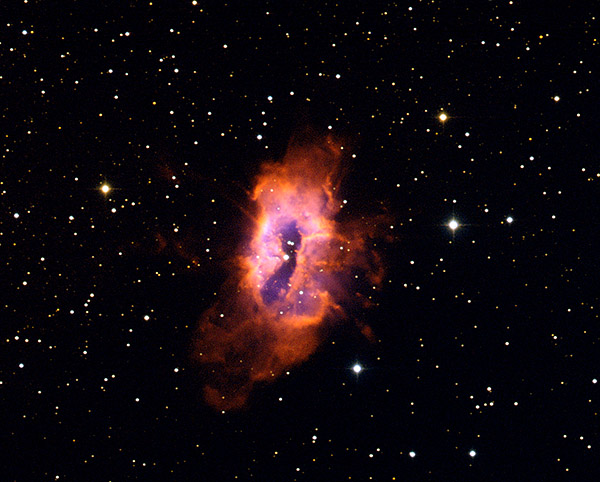 |
This composite image was obtained through the filters Hα (red, 3×120s), Sloan r´ (green, 3×30s) and [OIII] (blue, 3×120s) using the Wide Field Camera on the Isaac Newton Telescope on the 21st of October, 2013. Images were reduced using THELI, and processed using FITS Liberator and MATLAB. Field of view is 9×6 arcminutes, North up, East left. Credits: Teo Mocnik (ING) [ JPEG | TIFF ] |
The bipolar planetary nebula (PN) Sh2-71 lies in the constellation of Aquila at a distance of 1 kpc. It was discovered by Rudolph Minkowski in 1946. Shortly after the discovery, the central star (the brightest star in the centre of the nebula) was identified to be a variable with a quasi-sinusoidal lightcurve with an amplitude of 0.8 magnitudes. Later observations showed sharp brightness dips, possibly eclipses, with a period of 17.2 days. Besides an unusual lightcurve, it also exhibits pronounced spectral variations.
Astronomers believe that the central star is a close binary, which could explain the observed variability as well as the necessary mechanism for collimating the outflowing material.
However, some astronomers claim that the real central star is actually a much dimmer star located to the North-West of the bright one. The true nature of the planetary nebula Sh2-71 will remain veiled until more data are obtained and new analysis and explanations are provided.
More information:
INT's Wide-Field Camera.



